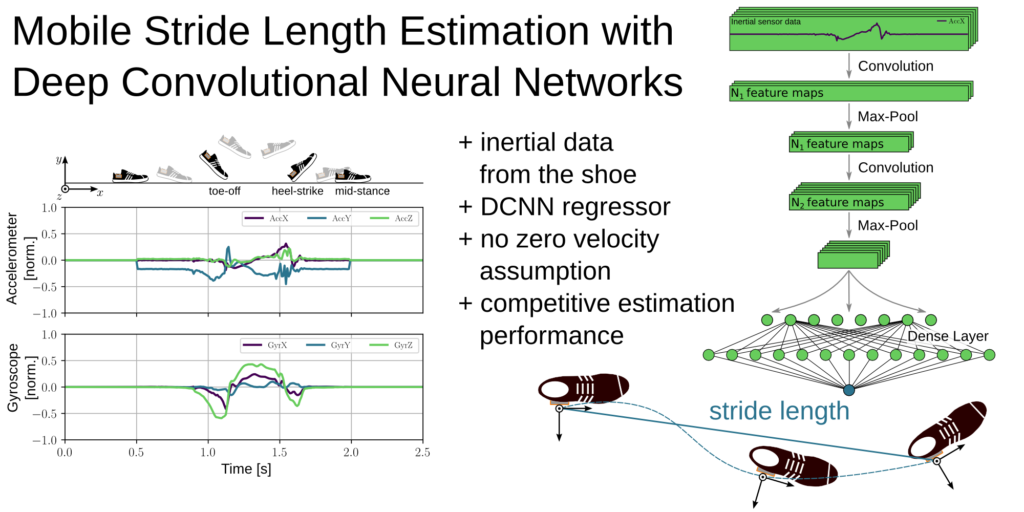Deep Learning for Sensor-based Gait Analysis
Because of the success seen in other domains, deep learning is starting to appear in the context of mobile gait analysis. We are currently using deep convolutional neural networks to train regression functions between stride-specific inertial sensor data and the corresponding biomechanical output parameters. With this change in methodology to a data-driven and integration-free approach to stride parameter extraction, the zero-velocity assumption is dropped. Thereby, clinically critical situations including diverse gait impairments as e.g. experienced by post-stroke, multiple-sclerosis or spastic paraplegia patients.
One exemplary and important output parameter is given by the stride length:
For this regression task, the network architecture contains two convolutional layers followed by max-pooling and a fully connected layer at the end. Finally, a readout compresses the information gathered throughout the stages of the network into the desired number of output parameters, in this case 1 stride-specific parameters (stride length). Given input IMU data for a large number of strides and corresponding output parameters, we train the network to achieve this regression task.
The following video briefly describes the story of the associated publication that appeared as a cover article in the Journal of Biomedical and Health Informatics 22.2, 2018:
Related Publications
- , , , , , :
Sensor-based Gait Parameter Extraction with Deep Convolutional Neural Networks.
In: IEEE Journal of Biomedical and Health Informatics 21 (2017), p. 85--93
ISSN: 2168-2194
DOI: 10.1109/JBHI.2016.2636456
URL: https://www.mad.tf.fau.de/files/2017/06/Hannink-et-al.-2017-Sensor-Based-Gait-Parameter-Extraction-With-Deep-Convolutional-Neural-Networks.pdf
BibTeX: Download - , , , , , , , :
Mobile Stride Length Estimation with Deep Convolutional Neural Networks.
In: IEEE Journal of Biomedical and Health Informatics 22 (2018), p. 354 - 362
ISSN: 2168-2194
DOI: 10.1109/JBHI.2017.2679486
URL: https://www.mad.tf.fau.de/files/2017/06/Hannink-et-al.-2017-Mobile-Stride-Length-Estimation-with-Deep-Convolutional-Neural-Networks-1.pdf
BibTeX: Download

